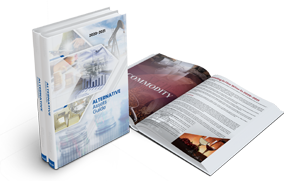
Never miss an important update |
Click to get notified about important updates only. |

99 Alternatives
Opportunities are Infinite
Homogenous products refer to the items that are perfect substitutes where the buyer finds no real difference between the products offered by different organizations. Price remains to be the single most important dimension.
In such a scenario, the existence of such products facilitates cooperation; simultaneously, heterogeneous products that are completely different from each other cannot be easily substituted.
Product Differentiation
Price competition in the homogenous goods market produces a perfectly competitive outcome, even with two firms.
If there are many participating entities - free entry and exit and relatively homogenous product, it can be designed as perfectly competitive (PC).
All firms produce homogenous goods, and consumers view them as identical.
All buyers and sellers have perfect information about the manufactured goods' price and quality.
Buyers and sellers cannot influence the price at which the item is purchased or sold, which means the buyers and sellers are price takers.
There are no transaction costs for participating in the market.
Each business unit bears the full cost of the production process, and there are no externalities that one can impose on others.
One can "enter and exit" any industry without a certain expense.
There exists perfect divisibility of the output.
The key condition for a competitive market is price taking, where every firm and every consumer must take the market price of the good as provided, and there are no one-sided rules that can affect the price by their choice of how to buy or sell.
A curve shows how many units can be produced together at each price.
It shows the quantity one may produce at each price to derive the supply curve.
If the market's supply curve combines the data from all the individual units, then an increase in the number of competitors will reduce profit for each. Each will have a smaller share of loss in the case of loss.
In general, in such models, the profits may be short-term and not long-term, not economic but accounting profits.
PC & Social welfare
A PC model maximizes social welfare as the production cost equals its social value.
Economists favour such markets because they maximize welfare for a given initial allocation of resources and wealth.
Further, the theory states income distribution is supported by a competitive equilibrium plus the system of income transfers.
Examples of such situations are publicly owned land gazed at by sheep farmers, where each producer considers their profit and does not consider overgrazing a problem. Rather, everyone would probably be better off with restrictions on using such fields, but producers dislike restrictions on gazing rights.
Similarly, the cost of oil per barrel is determined at one platform to regulate profits.
Real estate remains one of the most time-tested...
From liquifying your asset to any time you want to have...
Impact investing in real estate is a growing trend with...
Whether buying your first home or selling your...
What is better Silver or Sterling Silver? We all know...
How much do Twitch Streamers Make? Man is fun-loving...
Copyright © 2026 99alternatives Ltd. All rights reserved.
Designed and Managed by Mont Digital


